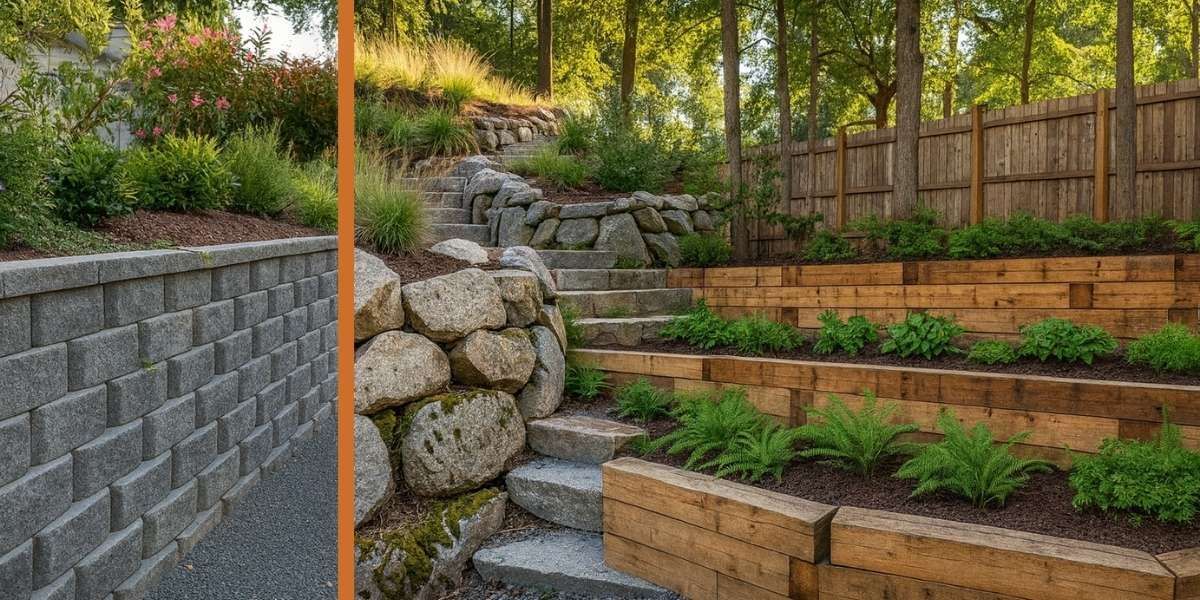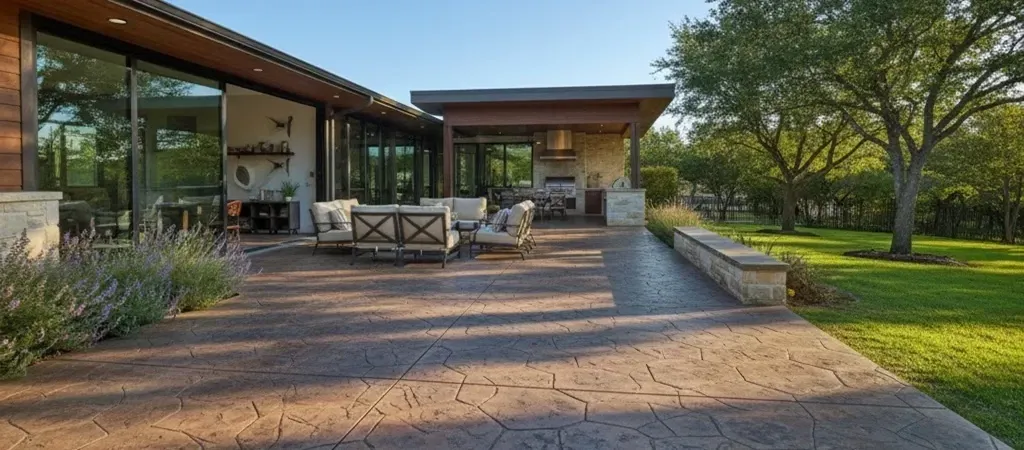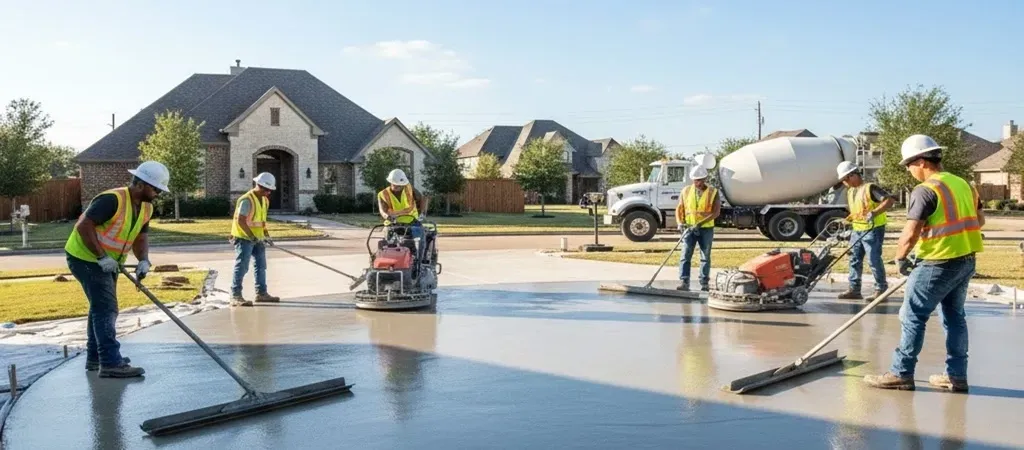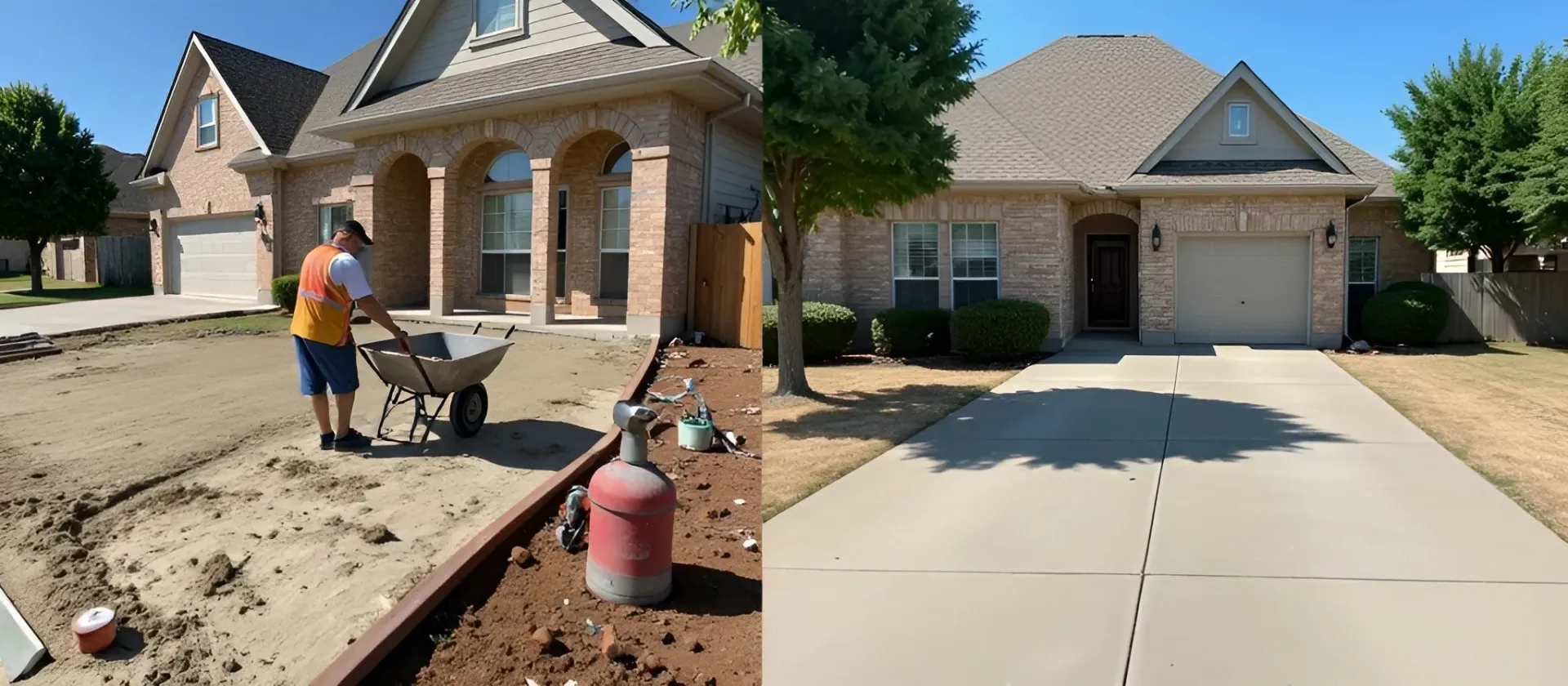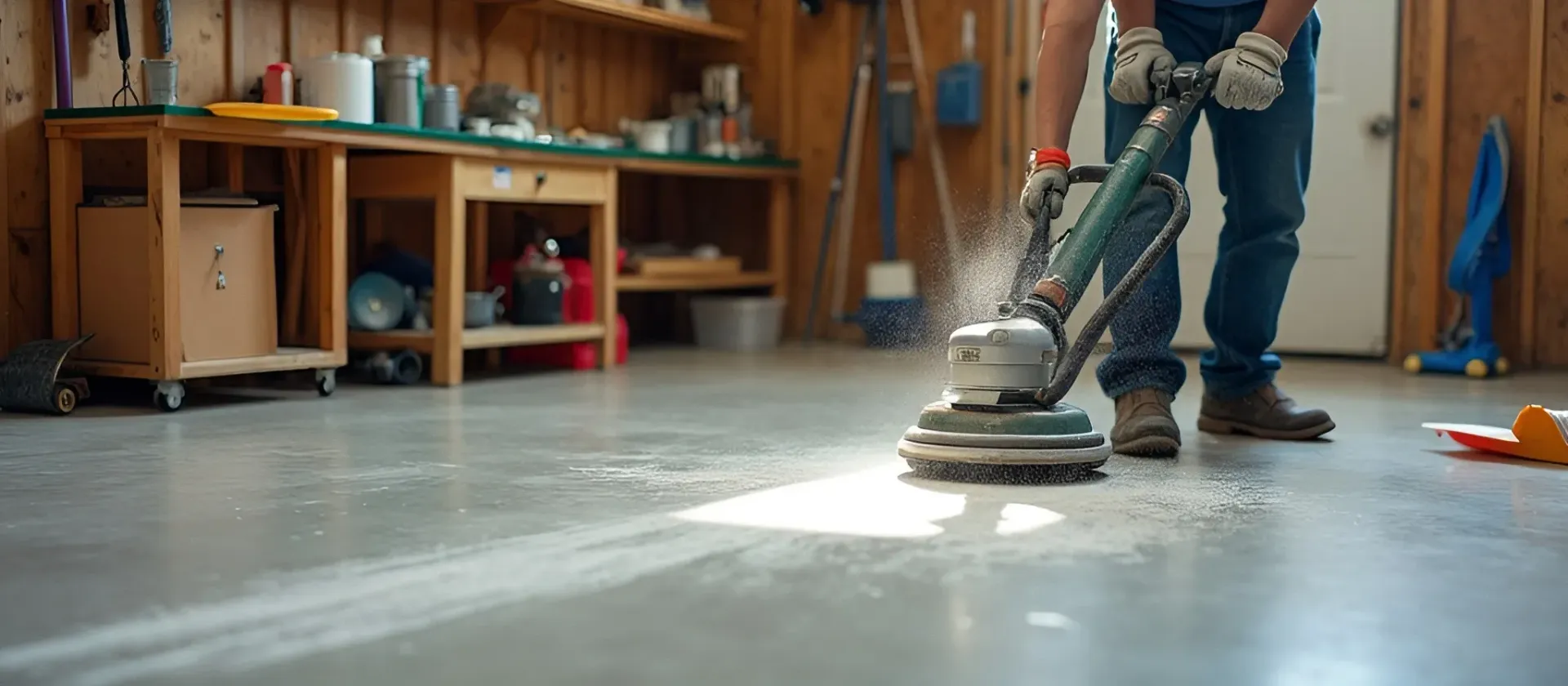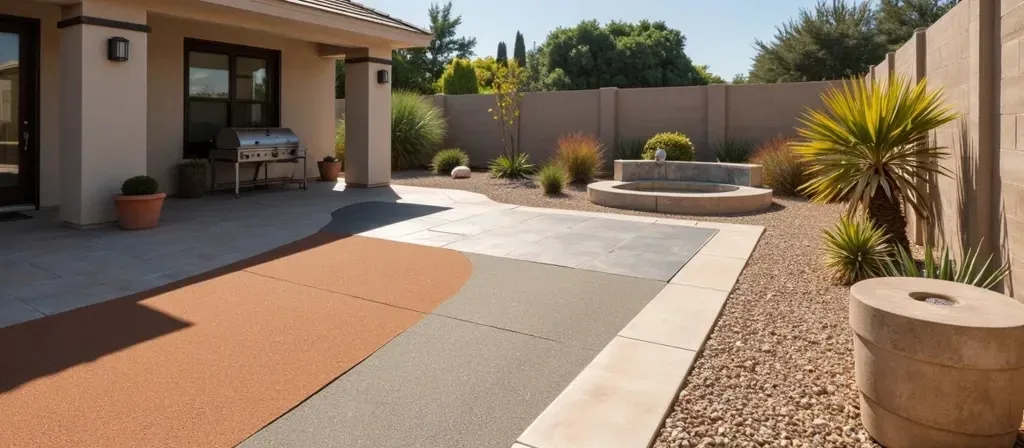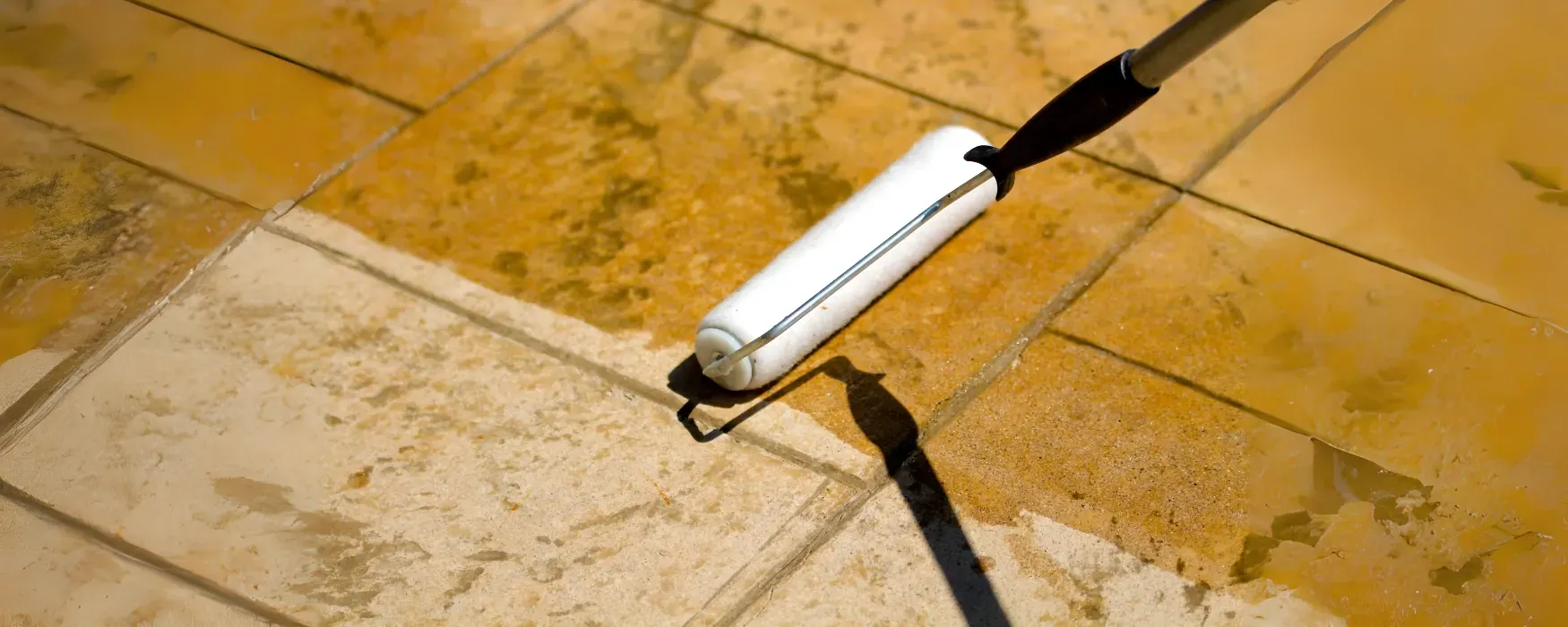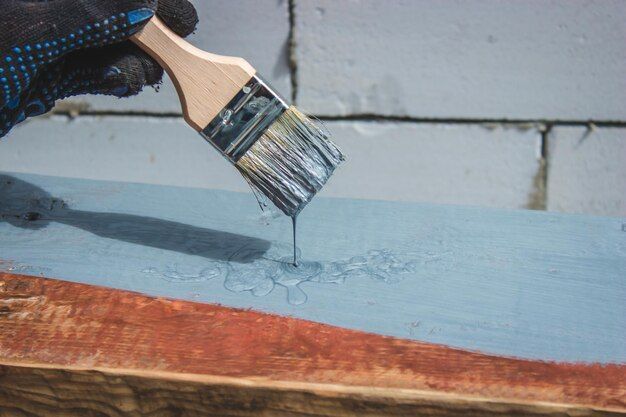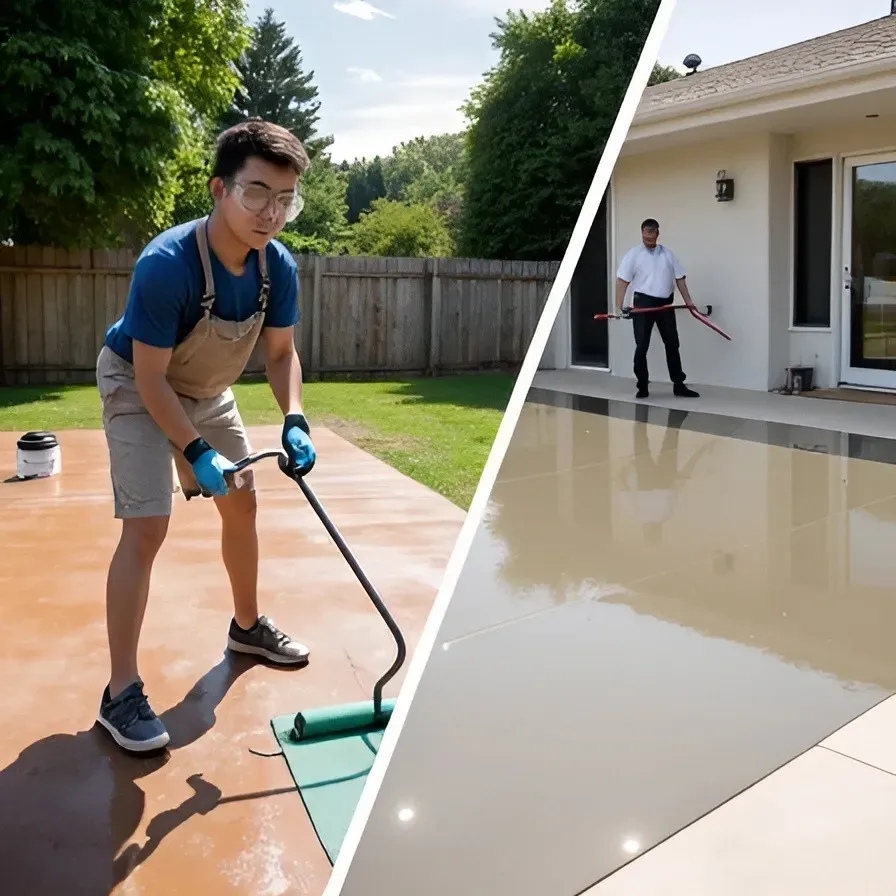
Bare, boring concrete isn’t doing your home or business any favors. Whether it’s your indoor floor, basement, or patio, a good concrete stain can totally transform the look and feel of that space.
But now comes the big question. Should you roll up your sleeves and DIY it? Or call in the pros? That’s exactly what we’re diving into today.
And don’t worry, we’re not just throwing facts at you like wet cement. This guide is your friendly neighborhood breakdown of what concrete staining really involves. What’s at stake? And which route makes the most sense for you.
So, What Even Is Concrete Staining?
Think of concrete staining like giving your floor a permanent tattoo. But way less painful.
There are two main types of stains. Acid-based and water-based.
Acid stains react with the concrete itself. That gives you cool, natural-looking tones with a marbled finish. It is super durable. But a bit moody, kind of like that one cousin who only wears earth tones.
Water-based stains are easier to use. They offer more colors from subtle gray to bright turquoise. They don’t react with the concrete like acid-based stains. So the finish is more even and predictable.
Both types can jazz up plain concrete. They can make slabs look like stone, leather, or something out of a Pinterest dream board.
If you want a deeper dive into these options, check out this article on the different types, process, and benefits of concrete staining.
DIY Concrete Staining: Is It as Easy as It Looks on YouTube?
Short answer? Kind of. But also… not really.
The Upside of Going DIY
Let’s start with the fun part:
- You save money. A basic DIY kit might set you back around $150–$200. Not bad, right?
- You call the shots. Want to work in your pajamas at 10 p.m.? No problem.
- It’s pretty satisfying. Finishing a project with your own hands? Feels good.
So yeah, for smaller, simpler spaces, DIY can actually work well. If you’ve got the patience and a solid plan, it might be worth it.
But be sure to prepare your floors properly before you start. Here’s a great guide on how to prep your floors for concrete staining to avoid common pitfalls.
The Not-So-Pretty Side
Here’s where things get a little tricky:
- Concrete staining is permanent. Once that stain is down, it’s there for good. Mistakes? Not so easy to fix.
- Prep work is serious business. You’ll need to clean like your in-laws are coming over. Every bit of dust, oil, or old paint has to go.
- It takes time. Most projects will eat up 2–3 days between prep, staining, drying, and sealing.
Also, let’s not forget safety. Acid stains require gloves, goggles, and lots of ventilation. One wrong move, and you’ve got chemical burns or a ruined floor.
Bringing in the Big Guns: Hiring a Pro
Now let’s talk about the VIP treatment.
Why Pros Might Be the Way to Go
- They’ve got the skills. Pros know how concrete behaves. They can handle weird surfaces and uneven spots, or that surprise crack hiding under your old rug.
- They bring the tools. High-end sprayers. Grinding machines. Commercial sealers. You name it.
- The finish is flawless. We’re talking showroom-quality floors that last for years.
Oh, and did we mention? Most pros offer warranties. That means if anything goes wrong, you’re not left fixing it yourself with duct tape and regret.
If you want tips on choosing the right contractor, read The Ultimate Guide to Hiring Concrete Contractors in Fort Worth.
What’s the Catch?
- It costs more. Expect to pay anywhere from $2 to $14 per square foot, depending on the design. Fancy patterns or multiple colors? That’ll run higher.
- Scheduling can be a pain. Good contractors are usually booked. So, unless you’re cool waiting a few weeks, it might be a bummer.
Still, for big projects or if you want that “wow” factor, hiring a pro can be totally worth it.
Money Talk: DIY vs. Pro Costs
Let’s break it down.
Yes, DIY looks cheaper. But one mistake could end up costing you more than just hiring a pro in the first place.
How to Decide What’s Right for You
Your home is not generic. It’s yours. So the solution better matches your space, your habits, and your people:
1. Scope of the Project
Got a small patio or single room? DIY could work. But if you’re doing the whole basement, or you want a fancy multi-color design, go pro. Learn more about concrete patios and the finishes available.
2. Your Concrete’s Condition
Old, cracked, or stained concrete? That’s a job for the experts. New, smooth surfaces? Easier to tackle yourself. If you’re curious about maintenance, check The Importance of Proper Concrete Maintenance for Fort Worth Homeowners.
3. Your Skill Level
Be honest—how handy are you? If you’re great with DIY projects, you might pull this off. If your last “easy fix” ended with a flooded kitchen… maybe sit this one out.
4. Your Budget
Tight on cash? DIY makes sense. Just know the risks. If you’ve got a bit more to spend, a pro can save you time, stress, and second-guessing. For pricing details, see this cost breakdown of concrete services.
5. How Fancy You Want It
Basic color? DIY. Complex patterns that look like polished marble or wood grain? Call in the pros.
Final Thoughts: DIY or Hire a Pro?
At the end of the day, both paths can lead to stunning results. It really comes down to your comfort level, your budget, and how much time you’re willing to put in.
- Want to save money and feel up for the challenge? DIY it.
- Want peace of mind and picture-perfect results? Hire a pro.
Either way, you’ll end up with a beautiful space that looks nothing like plain old gray concrete. And hey, whether you’re holding a paint sprayer or handing over the check, you’re making your home better. That’s something to feel proud of.
